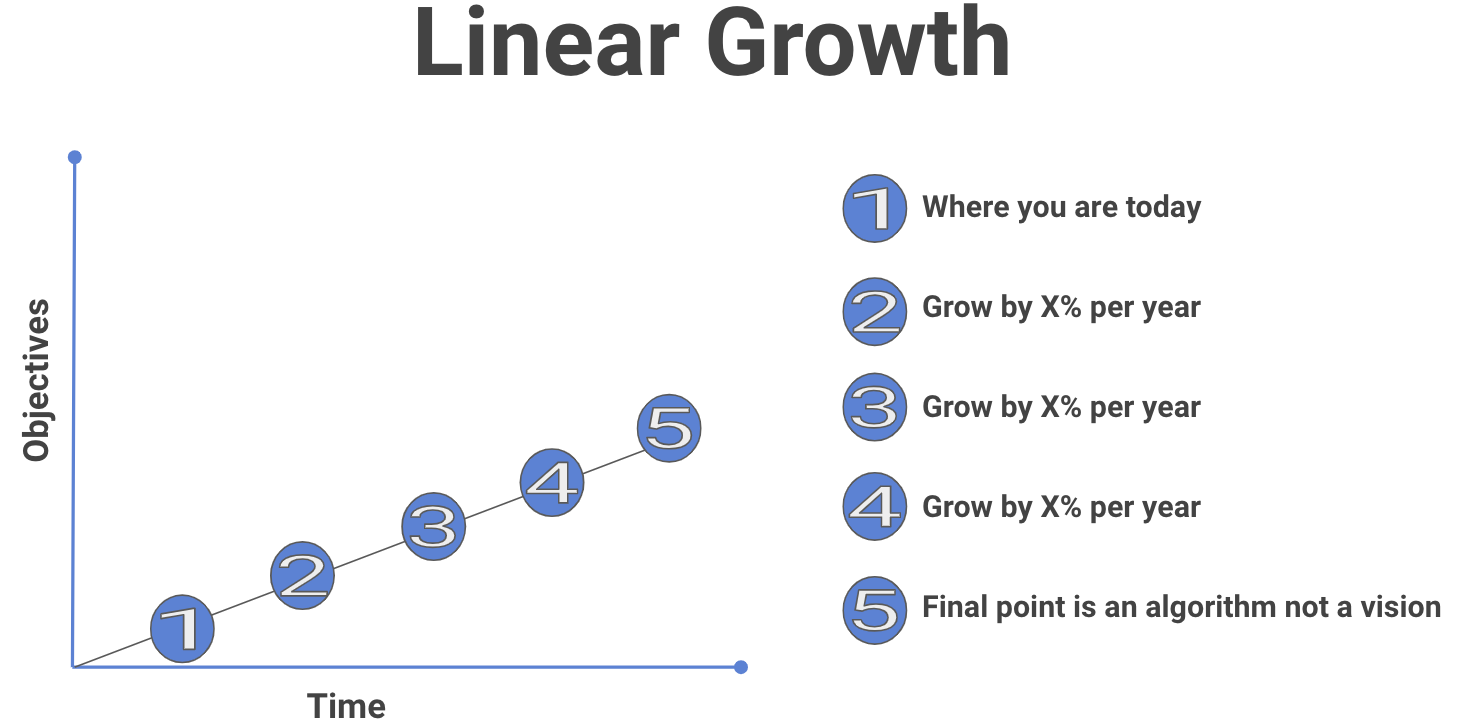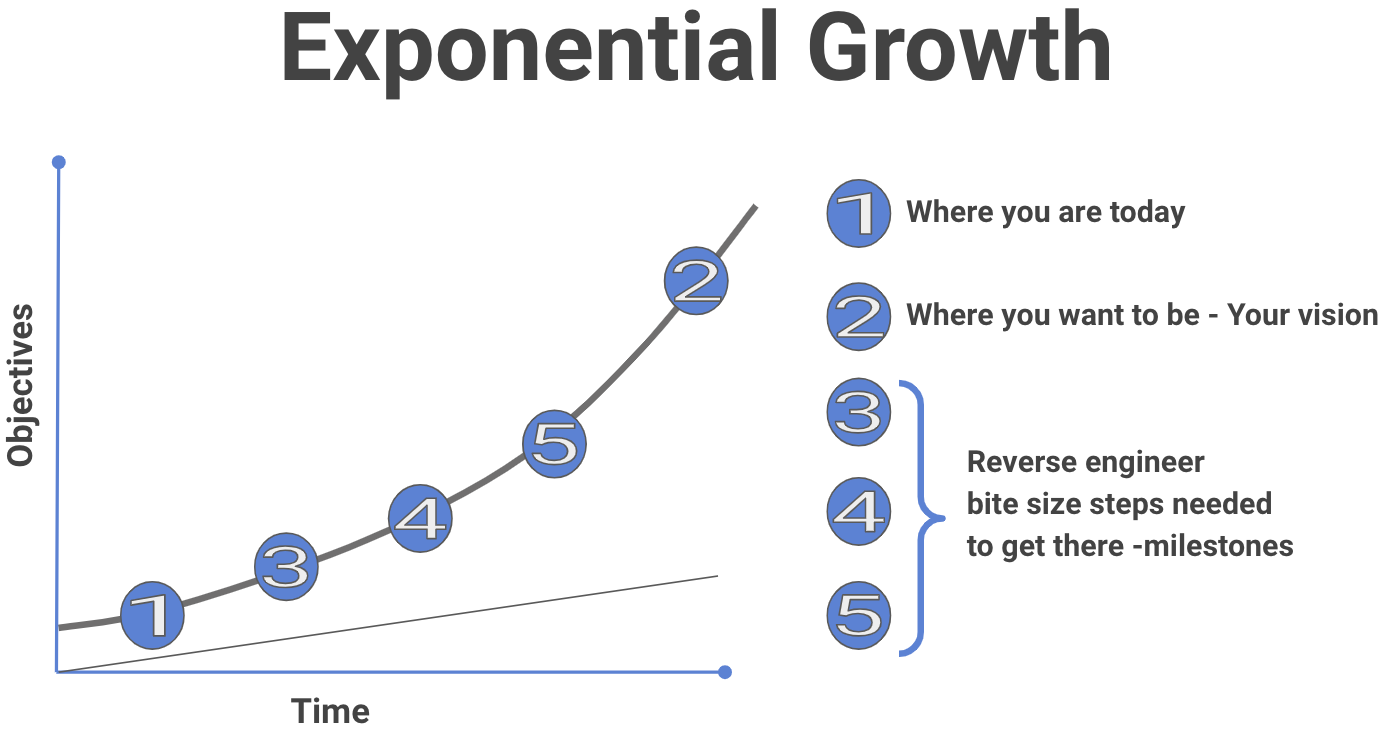Quick Summary
To achieve rapid business growth, shift from traditional annual planning to an agile, quarterly approach that emphasises setting specific 90-day goals aligned with a realistic three-year vision.
Takeaways
- To achieve sustainable growth, businesses should replace annual planning with a flexible, quarterly approach.
- Setting clear 90-day goals keeps teams focused, accountable, and adaptable to change.
- A well-defined three-year vision provides long-term direction while allowing for agility.
- Frequent reviews and adjustments ensure businesses stay on track and respond to challenges effectively.Fo
Are your thoughts turning to next year? Thinking you need a new plan to grow your business in 2025? Maybe you’ve dusted off your 2024 spreadsheet and want to use it as a template. Stop right there! The biggest mistake we see our clients make is viewing planning through a 12 months lens.
It’s natural to want to get off on the right foot as we enter the New Year. Even if your annual cycle isn’t calendar, there’s a feeling of fresh impetus. A new start. But try not to fall into the trap of linear thinking – always looking backwards and using what you achieved last year as a benchmark for next year’s targets. You’ll never achieve the rapid growth you crave by thinking this way.
Too often, new clients come to us with a 5 – 7 year plan and then show us a spreadsheet for the next 12 months. It has no connection to the bigger plan! And no clear evidence of how they’re going to hit that longer-term goal. We tell them they need to shift their mindset away from fixed ideas of annual cycles towards a more agile, quarterly approach. This is how you drive the metabolic rate of your organisation up.
Quarterly not annual
One of our constant mantras is ‘quarterly not annual’. That’s because a quarterly cycle is much more effective for goal setting. An annual horizon is too far away. It’s far too easy to kick things down the road. There’s no sense of urgency.
Firstly, work out where you think you’re going to be in three years’ time. Or how quickly you’re going to double your business if that’s a shorter or longer period than three years. Bear in mind you’d need to grow at roughly 20% a year if you’re going to double in size in three years.
Bring the brutal truth to this process (to quote Jim Collins). This isn’t about some spurious finger in the air – ‘we hope’, ‘we wish’, ‘it might happen’. No it won’t! Be honest – where will you be with your current capabilities? And work back from a realistic three-year goal.
Remember, three years is 12 quarters over 36 months. Work back, quarter by quarter, breaking down what needs to be done in each (both fiscal and non-fiscal). Now get really specific about the next 90 days.
If you take this three-year view and look back, you’ll realise that three years is where the reality of today hits the future. You haven’t got that much time to make a massive difference but there’s enough time to influence the result. As you move through each quarter, report your progress against the three-year number. This means that a couple of quarters in, you can ask yourself whether you were really being rational about your three-year number. Adjustments can be made accordingly as the three-year number rolls out.
Change your thinking from linear to exponential


Humans have a tendency to naturally default to a linear way of thinking. And we’re self-referential when we do. Decisions are based on our own experience of the world. Even when the world is full of examples of exponential thinking, we tend to look backwards and plan based on what we’ve achieved before.
Try not to limit your ambitions like this. With the right approach and careful planning, it’s perfectly possible to launch your business on an ambitious, exponential growth curve.
Challenge your assumptions
If you think in a linear way, looking at last year’s results and rolling them forwards, there’s no assumption-challenging. Instead of this, put a number out there. You’re going to double the company. OK – how long is that going to take? 2 years, 3 years, 5 years? So what needs to be true for that to happen? What’s not in place today that needs to be in place so you can double your company in that timescale? This forces you to think differently. The Executive Team has to get out of their silos and agree, as a team, what scores they need to achieve for this result.
It forces you to work out what it is that really drives your economic engine. There are so many books that can help with this – ‘Measure What Matters’ by John Doerr, ‘Scaling Up’ by Verne Harnish and ‘3HAG Way’ by Shannon Susko are good places to start.
Make the uncertainty bigger. What are the assumptions or truths that you’re holding onto that, over the next three years, you need to prove or disprove? What progress can you make on that in the immediate 90 days?
Set ambitious OKRs each quarter
Ambitious OKRs should be set for each quarter. They’re our methodology of choice because they focus minds and provide the impetus you need. They will help you prioritise the most important activities in each quarter of your three-year plan, bringing agile techniques out of software development and into the core business. Rapid change and iteration are central to their success.
A good score on an OKR is around 70%. Enough of a stretch to challenge your teams but still achievable. Report progress on them every week with relentless consistency. This will drive things forward.
Learn from Eisenhower
‘Planning is everything. The plan is nothing’. So spoke Dwight Eisenhower in 1957 as he reflected back on his time as an American military General. He had been forced to postpone the D-Day landings by 24 hours due to bad weather. So one day into his meticulously planned operation, they were already a day late.
In a nutshell, what he was saying was that yes – it was important to think about what to do and how to do it. But when the time comes, you shouldn’t let your plans constrain you. It’s the act of preparation that’s important, rather than the preparations themselves. Most plans are useless almost as soon as they’re put in motion. So don’t get too set on a fixed outcome.
Ask some difficult questions

Change your mindset. Start to ask the more challenging questions. Where will this doubling of your revenue come from? Which customers will drive this growth? What problem of theirs will you solve uniquely well? What does this mean for your products and services, future M&A and methods to raise money? What talent will you need and does this involve a management training programme?
This is all part of working out your unique business model – something that’s so often lacking when we first talk to our clients. They have fiscal measures, a revenue number and a profit number. But they’re not clear on their unique model.
Have you ever split the revenue that comes from net new logos from existing customers? Do you know the business you need to win over the business you’re likely to win? I’ll bet it’s very different. You may have an idea of the revenue growth you need, but where’s the detail underneath that supports this? Who are the core customers you’re planning to sell to? What’s the problem that you’re going to solve for them? Who are your competitors? What’s your proposition? All of this is vital for an ambitious, growth mindset.
Stop copying big business practices
Many larger companies aren’t growing fast. They’re trying to constrain costs and set budgets with an entrenched, silo mentality. The emphasis is on driving profitability without driving any revenue at the top. Lots of things that public limited companies do tend to trickle down to private businesses. Annual returns. Forecasts for next year. The Chairman’s report etc. etc. Don’t fall into the trap of copying them unthinkingly. Smaller businesses can be much more agile and responsive.
None of these bigger businesses is going to say in public, this is where we think we’re going to be in three years’ time. Such forward-looking statements could get them into all sorts of trouble. But the private companies that we deal with don’t have these constraints. They can look ahead and start to build out. That’s the joy of coaching growth businesses – we’re lucky. It’s much more fun to be part of their journey.
—
Written by business coach and leadership coaching expert Dominic Monkhouse. Contact him to schedule a call here. You can order your free copy of his book, Mind Your F**king Business here.

